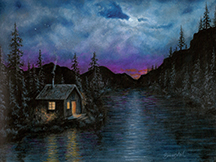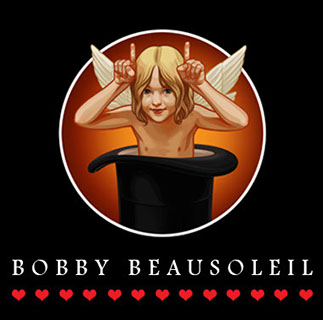
7 Questions with Bobby BeauSoleil: Artist
Anthony Stetchyson
Bobby answered a few questions about his art and his process for The Ekphrastic Review:
Many visual artists draw inspiration from the world around them. You’ve been in prison since 1970. What inspires you?
While I admire the work of some of the artists in prison who are inspired by their surroundings, I am not one of them. Rarely do I encounter anything in my immediate physical environment that moves me to produce a rendering in visual art as anything close to a literal representation of it. But then, were I in an environment where I would be surrounded by beautiful natural vistas it's unlikely I would be inclined to produce artistic images of what I see. In either case, however, the surroundings may influence how I feel or what I imagine on the screen of my mind, and this will often move me to create art rooted in these visualizations or emotions. So you might say that my immediate surroundings may inspire my work indirectly.
Describe your process, where do you paint? How do you obtain your materials?
I like privacy when I'm working on visual art. Once in a while I may be invited to help paint a collaborative mural somewhere in the prison; in all other cases I work at a small table in my prison cell, usually at night when it is quieter. I am able to purchase some very limited types of art materials from outside vendors. In most California prisons the handicraft programs
and art programs have faded away. This has severely limited access to art materials such as oil or acrylic paints and canvases, leaving as the only options things like graphite and colored pencils, pastels, crayons, and paper art pads in smaller sizes. I have been able to finagle some larger sizes of art paper, and through experimentation I have learned how to make my own paints from the types of media that are permitted. I have a few brushes left over from when handicraft programs still existed. Where there's a will there's a way, as they say. I know guys who produce some amazing art using ballpoint pens, or dissolved instant coffee applied with cotton swabs. Cardboard from boxes found in trash cans is a canvas for some. Like a few other artists I have found in these places, my natural inclination is to veer away from influences that may inhibit a truly authentic artistic vision.
How do your fellow inmates respond to your art?
In every prison, you will find a community of artistic and creative people, though such communities tend to be small in this environment. At a very basic level there are people who are moved to express themselves creatively and those inclined to express themselves destructively. Prisons by their intrinsic nature tend to foster the latter more than the former. Those who choose to go against the grain and produce meaningful art must be determined enough to overcome some challenges and obstacles. There are always at least a dozen or so men in a prison who are driven and passionate about creating art in spite of the hindrances, lack of opportunity and resources. For some it is a path to liberation, a way of freeing themselves from a criminal past and the resulting confinement – even, for some, when parole is not a possibility.
Do you follow the movement known as Prison Art?
Not really. I am only peripherally aware that there is such a movement. I think it's great that people out in the greater community are able to view and connect with some of the art that is produced in prison. Hopefully this is being done in a way that is not exploiting the artists.
Who buys your work? How do you market it and what do you do with the money?
Presumably the people who purchase originals or art prints of my work are people who have a genuine affinity for my work. As for marketing, I don't put a whole lot of energy into promoting my work for sale. I believe that all people, including and perhaps especially artists, have a responsibility to share their God-given gifts with the world. Sharing my work is a spiritual mission for me, so that's the emphasis in how I put energy into making it available to people. As a general rule, I put high resolution images of all my visual art in my online gallery. Anyone can see the body of my work for free, and even zoom in to see details. When an original or art print is bought the proceeds go to supporting the infrastructure that makes it possible to share the work with the public, including costs associated with the online gallery, art materials, paying the person who manages the infrastructure, and that sort of thing. In those rare instances when there is a surplus, any financial returns are put into a trust I have set up for my children and grandchildren. Many of the originals of my paintings are given to members of my family or friends; occasionally I put an original up for sale, and I have been known to accept a commission from time to time. The three monster cartoons you've selected as examples of my work, for instance, were done on commission for someone who wanted me to produce a series of monster musicians. I called that series 'Band Outa Hell'.
Is art just a way to pass the time, or do you find it therapeutic?
Times passes all on its own without any help from me. The difficulty is in finding enough of it to get all the work done that I've taken on. Were I to catch myself doing a painting out of boredom, I would stop immediately and do some yoga. Honestly, I can't remember the last time that happened. Working on visual art or music is a kind of meditation for me, a good practice for staying in the moment. That's a kind of therapy, I suppose.
Thank you, Bobby!
To read more articles in The Ekphrastic Review visit: http://www.ekphrastic.net
© 2014 Bobby BeauSoleil and BHDesigns. All Rights Reserved. Images are copyrighted to their respective owners. Go to our Privacy Policy.
